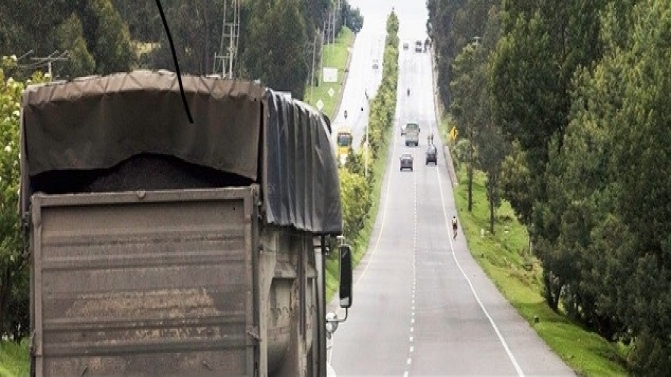Achieving the Sustainable Development Goals to end extreme poverty by 2030 will require about $4.5 trillion annually, far more than multilateral development banks or donors can provide by themselves. To face this challenge, the World Bank Group adopted the MFD approach, which entails working with governments to crowd in the private sector while optimizing the use of scarce public resources. This approach is guided by the Hamburg Principles adopted by the G20 in 2017 and builds on the substantial experience across the institution.
Colombia’s Fourth Generation Roads Concession Program (4G) is a large-scale plan to create a nationwide toll road network with private sector participation. At the request of the government, the World Bank Group provided integrated advisory and financing support to lay the foundation for the program. As a result, Colombia has a stronger enabling environment for public-private partnership (PPP) transactions and better capacity to manage them. Over $14 billion are expected to be mobilized for the 4G program.
Development Challenge
Since 2002, Colombia has enjoyed economic growth, an increase in jobs, and a reduction in poverty. But further growth and competitiveness are being hampered by poor road infrastructure. To continue its development, Colombia needs more roads to connect its cities and main commercial centers with its ports. In 2011, the government requested support from the World Bank Group to transform the sector through the ambitious Fourth Generation Road Concession Program, which required an estimated $26 billion for 8,100 kilometers of roads.
The MFD Approach
The World Bank Group’s engagement in the Colombian road sector is a good example of how the Maximizing Finance for Development (MFD) approach can have a positive effect. Working closely with the government, the World Bank Group used an integrated approach, including: (i) assistance in developing an enabling environment, (ii) support for the preparation of PPP transactions, (iii) capacity building for both officials and local investors, and (iv) direct investment in Financiera de Desarrollo Nacional (FDN).
Setting Up the Regulatory and Institutional Framework
Significant improvements were necessary to build Colombia’s policy, institutional, and financial structures to create an enabling environment for private sector investment in key sectors.
- Improved legislation: The World Bank and IFC helped the government prepare PPP umbrella legislation. This passed in 2012, incorporating best international practices. In 2014, experts from The World Bank, IFC, and MIGA provided further policy and technical advice for reforms allowing new sources of local domestic financing in infrastructure.
- New institutions: The World Bank provided technical assistance that supported the creation of a new transport infrastructure concessions body, the Agencia Nacional de Infraestructura (ANI). The World Bank Group also helped the government establish FDN, Colombia’s national development bank, through technical advice and IFC’s initial investment of $70 million.
- New financing structures: IFC and FDN co- invested in the Colombia Infrastructure Collective Debt Vehicle, which facilitates investments in infrastructure by institutions such as pension funds. Joint World Bank-IFC technical assistance helped FDN establish a standardized project bond structure and associated guarantee, develop relevant regulations, improve pricing benchmarks, and train domestic institutional investors.
The PPP Program
Prior to 4G, the government awarded three concessions totaling $2.6 billion for the Ruta del Sol toll highway with IFC support. Drawing on this success and its extensive global experience, IFC helped the government expand the implementation and financing of the 4G program:
- PPP implementation process: IFC acted as an "advisor of advisors," helping the government standardize transaction documents and streamline processes. This reduced transactions costs and increased efficiency. IFC also supervised transaction advisors in three 4G road projects among the first set of concessions taken to market.
- Financing: IFC helped finance the program in collaboration with development partners. The Inter-American Development Bank (IDB) provided debt finance for one of the first projects implemented under the 4G program. IFC and the Corporación Andina de Fomento (CAF), a Latin American development bank, invested $78 million and $50 million respectively in FDN. In addition, IFC and CAF are anchor investors in a local infrastructure fund that mobilized domestic institutional investors who further invested in one of the 4G projects. IDB also provided financing through senior debt. By March 2017, 32 projects in the 4G program were successfully awarded, for a total expected initial investment of $14.8 billion.
Making a Difference
World Bank Group engagement in the 4G program achieved two key outcomes. First, the new road projects are expected to have a 1.5 percent multiplier effect on GDP during the construction period, with long-term GDP growth reaching 4.6 to 5.6 percent. A long-term reduction in unemployment of 1.5 percent is also expected. Second, the program closed the financing gap in the Colombian road sector by increasing private participation in toll road projects. As of December 2017, ANI had awarded 32 projects and achieved financial close for nine, representing $4.6 billion.
The new regulatory and procurement framework increased efficiency and competition significantly. About $1.7 billion was from international financiers and $2.9 billion from national bankers. The legal and institutional framework significantly increased Colombia’s capacity to manage and finance infrastructure projects. ANI and FDN were instrumental in achieving these positive results.

